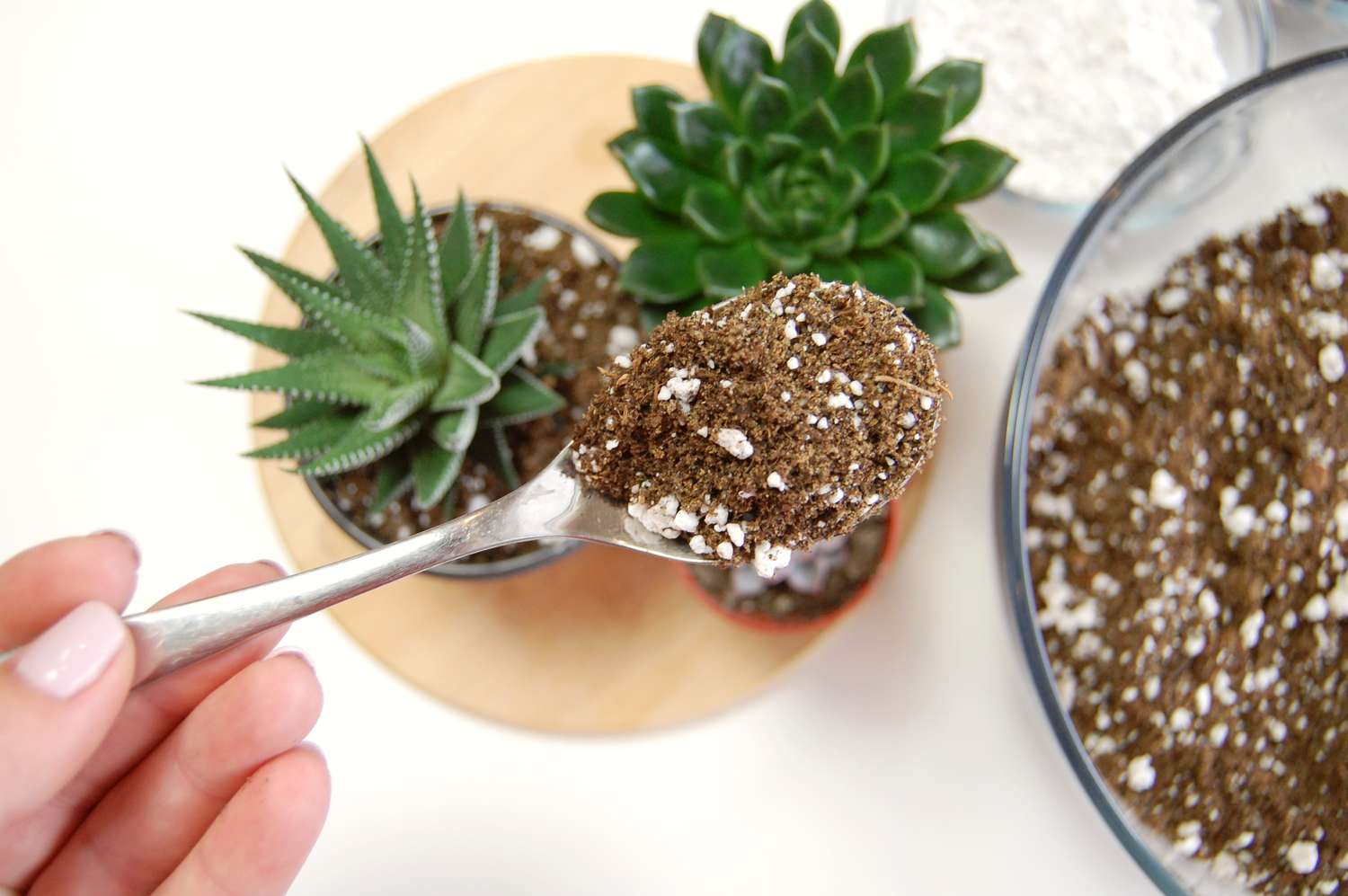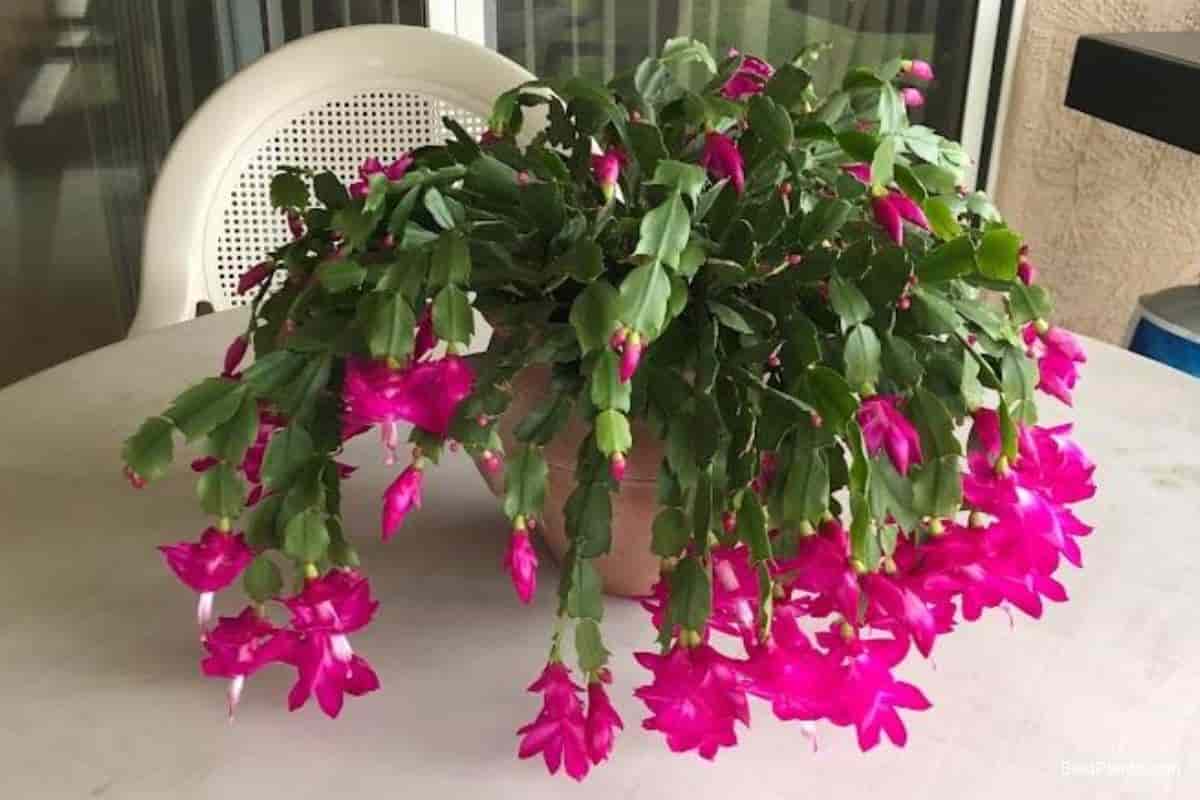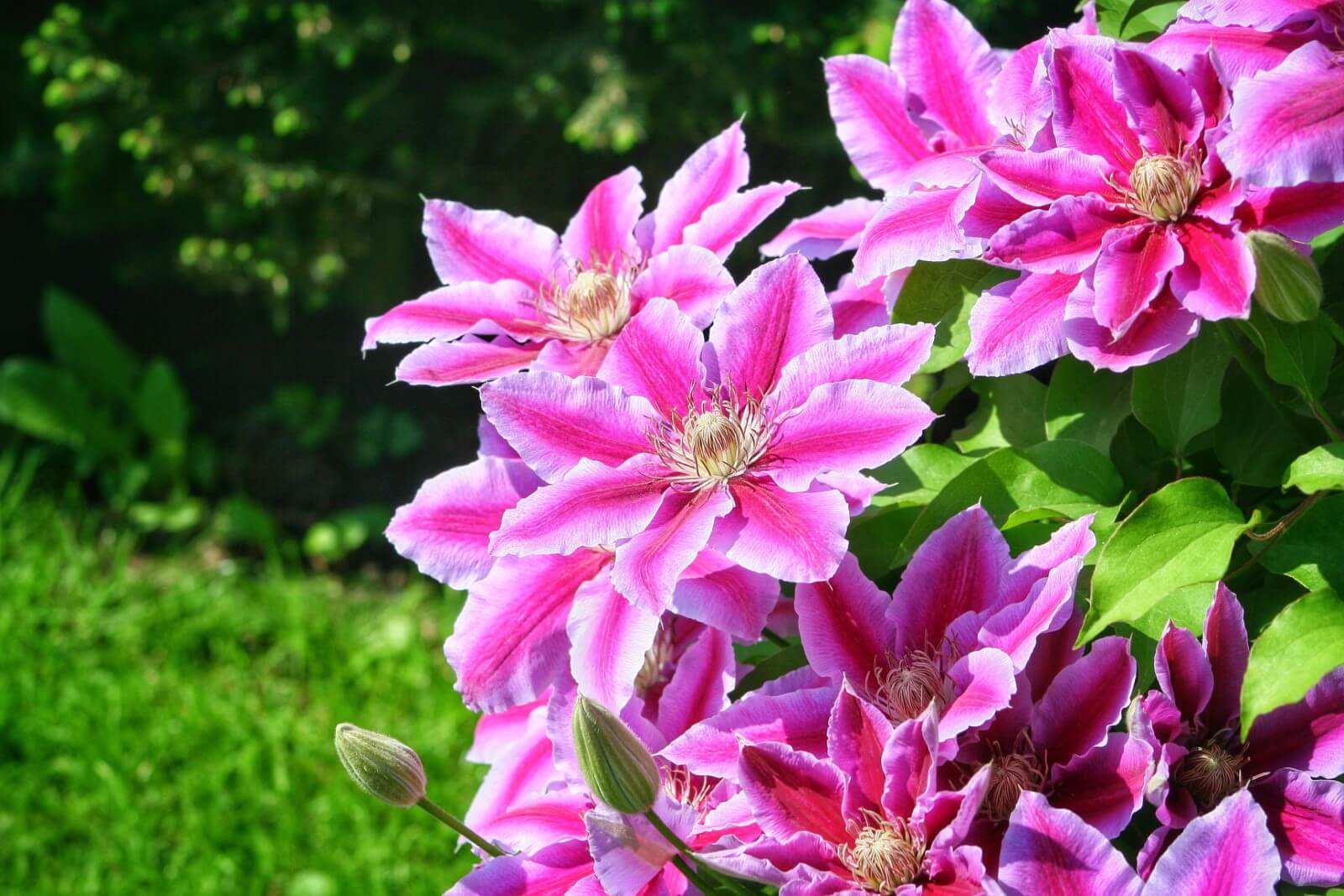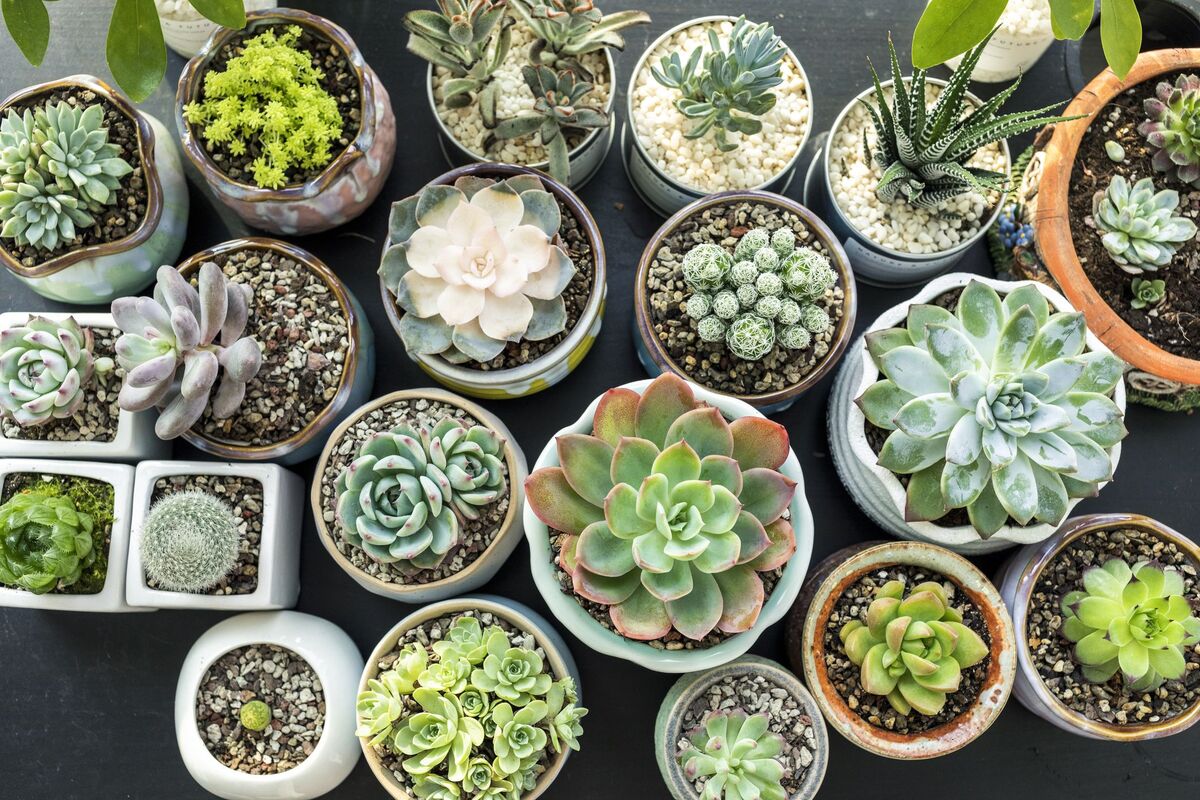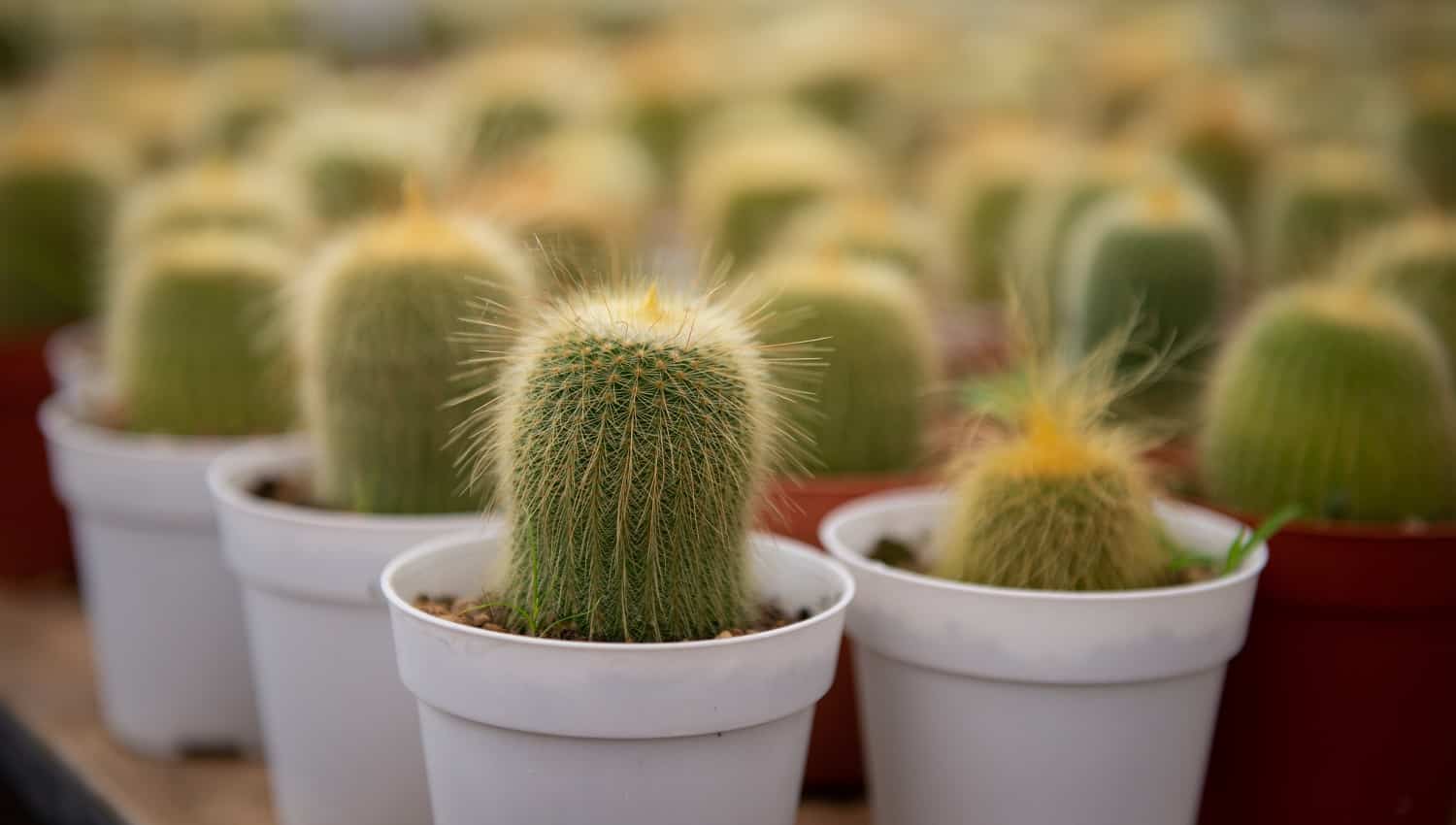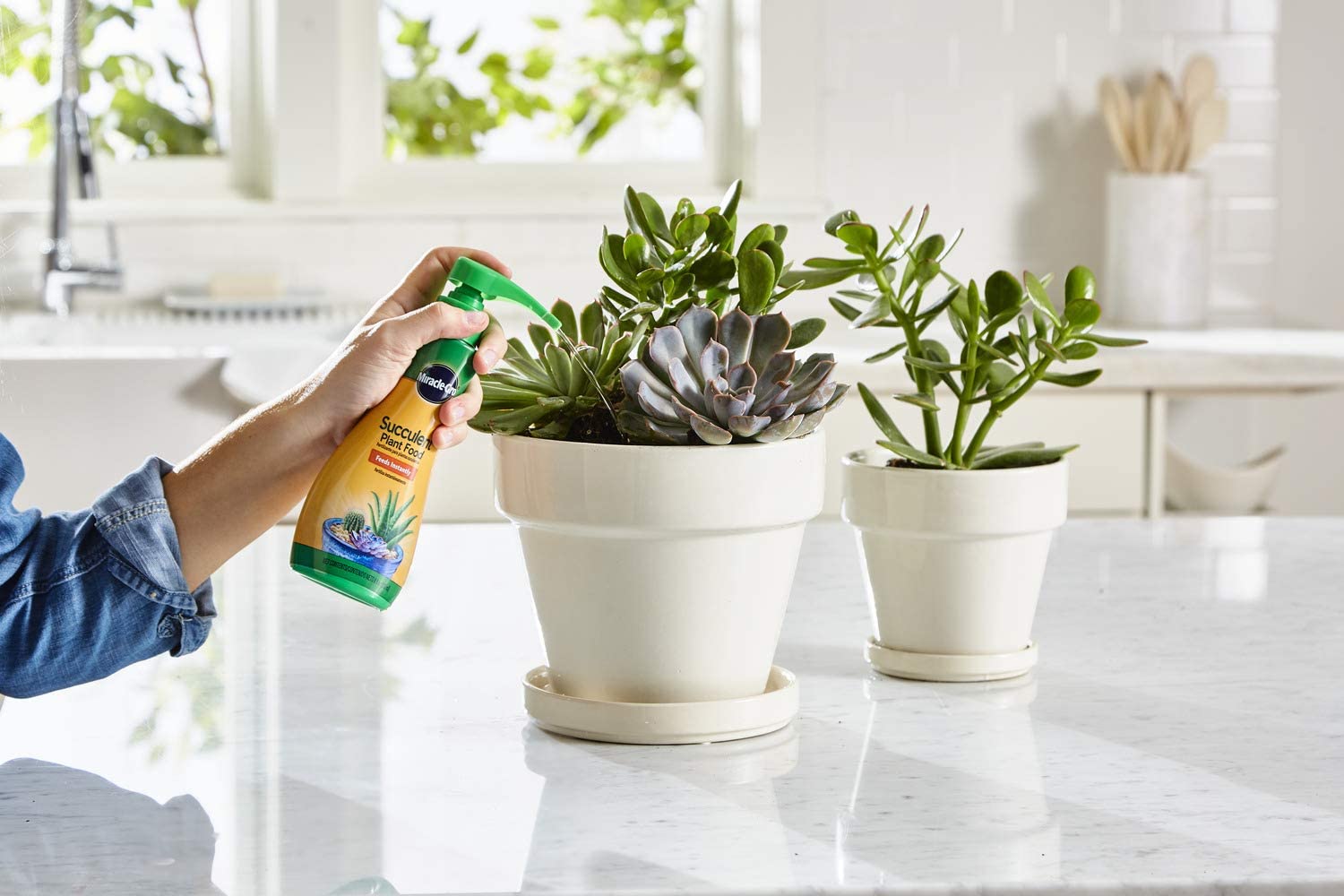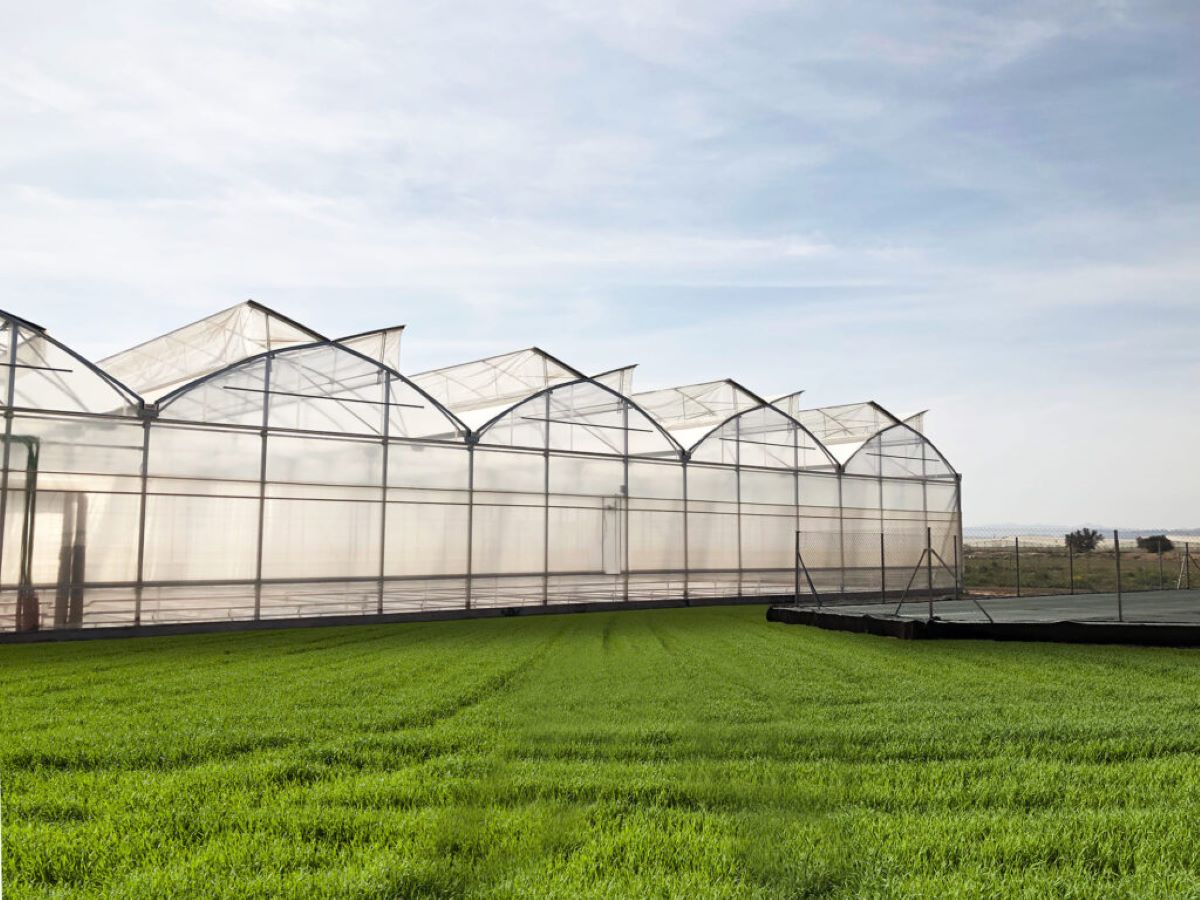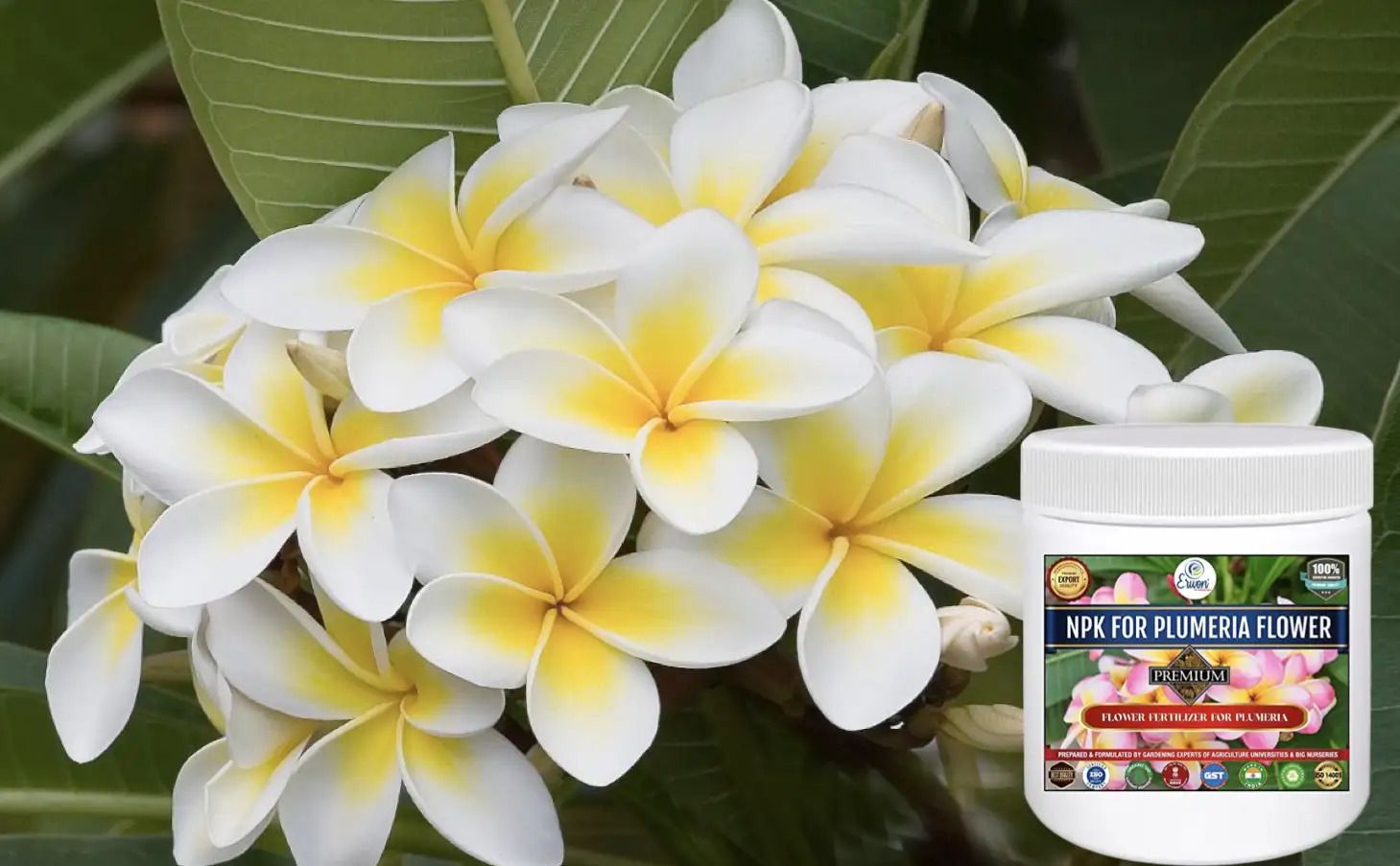Home>Gardening Basics>Understanding Soil>What Kind Of Soil For Cactus


Understanding Soil
What Kind Of Soil For Cactus
Published: February 11, 2024
Discover the ideal soil for cactus plants with our comprehensive guide on understanding soil composition. Ensure optimal growth and health for your succulents!
(Many of the links in this article redirect to a specific reviewed product. Your purchase of these products through affiliate links helps to generate commission for Chicagolandgardening.com, at no extra cost. Learn more)
Table of Contents
Introduction
Welcome to the world of desert beauties – cactus plants! These unique and fascinating plants have captured the hearts of plant enthusiasts all over the world. With their striking shapes and ability to thrive in arid conditions, cacti have become popular additions to indoor and outdoor gardens alike. However, one key aspect of successful cactus cultivation is often overlooked – the soil.
Choosing the right soil for your cactus is crucial for its overall health and growth. Cactus plants have specific needs when it comes to soil composition and drainage. In this article, we will explore the characteristics of cactus plants, the importance of choosing the right soil, factors to consider when selecting cactus soil, the best soil types for cactus, how to create a suitable cactus soil mix, and common mistakes to avoid.
Whether you are a seasoned cactus enthusiast or just starting your cactus journey, understanding the role of soil in cactus care is essential. By providing your cactus with the optimal growing environment, you can ensure that it thrives and displays its vibrant beauty to its fullest potential.
So, let’s dive in and uncover the secrets of what kind of soil is best for cactus plants. Discover the key considerations and tips that will help you create the perfect soil mix for your beloved desert treasures.
Characteristics of Cactus Plants
Cactus plants are renowned for their unique and striking characteristics that set them apart from other types of plants. These resilient succulents have evolved to survive in arid areas, with adaptations that enable them to endure harsh sun, scarce rainfall, and dry soil. Understanding the key characteristics of cactus plants can provide valuable insights into their specific soil requirements.
One of the most distinctive features of cacti is their succulent nature. These plants have thick, fleshy stems that store water, allowing them to withstand long periods of drought. Their ability to retain moisture is crucial in environments with limited rainfall and infrequent watering. As a result, cacti prefer soil that promotes good drainage, preventing water from sitting around the roots and causing root rot.
Additionally, cacti often have shallow root systems that spread out horizontally near the soil surface rather than growing deep into the ground. This adaptation allows them to quickly absorb any water that falls on the soil’s surface. Consequently, cactus soil should be able to provide anchorage for the shallow roots while still allowing excess water to drain away promptly.
Another prominent characteristic of cactus plants is their preference for sunlight. Most cacti thrive in bright, direct sunlight, often found in their natural desert habitats. These plants have evolved to withstand intense heat and radiation, making them excellent choices for sunny windowsills or outdoor gardens with ample sunlight. The soil chosen for cacti should support their sun-loving nature, providing adequate nutrients while still allowing for sufficient airflow around the roots.
In summary, cactus plants have distinct characteristics that make them uniquely suited to their harsh desert environments. Understanding their succulent nature, shallow root systems, and sunlight requirements is crucial when it comes to selecting the right soil for cactus plants. By providing the ideal growing conditions through proper soil choice, you can ensure that your cactus thrives and showcases its remarkable resilience and beauty.
Importance of Choosing the Right Soil for Cactus
Choosing the right soil for your cactus is of utmost importance as it directly affects the plant’s overall health and growth. The soil serves as the foundation for your cactus, providing essential nutrients, water retention, and a stable growing environment.
One of the primary reasons why choosing the right soil for cactus is important is related to their unique water requirements. Cacti are adapted to surviving in arid and dry conditions, where water is scarce. Their fleshy stems and shallow root systems are specialized for water storage and absorption. The soil must allow for proper drainage, preventing waterlogged roots that can lead to rot and other moisture-related issues. It should also retain enough moisture to sustain the plant between waterings, striking a delicate balance between dryness and saturation.
In addition to drainage and moisture retention, the soil also plays a significant role in providing the necessary nutrients for cactus growth. Cacti have specific nutrient requirements, including a balanced mix of macronutrients (such as nitrogen, phosphorus, and potassium) and micronutrients (such as iron and magnesium). The right soil composition ensures that these nutrients are accessible to the plant, promoting healthy growth and vibrant blooms.
Choosing the wrong soil can have detrimental effects on your cactus. Soil that is too dense or compacted can lead to poor drainage, causing root suffocation and eventual plant death. On the other hand, soil that is too loose may not provide adequate anchorage for the shallow roots, resulting in instability. Furthermore, soil with a high clay content can retain excess moisture, leading to root rot, while sandy soil may drain too quickly, leaving the cactus thirsty and deprived of sufficient nutrients.
By selecting the appropriate soil for your cacti, you are providing them with the optimal growing conditions for long-term success. A well-draining soil mix that balances water retention and aeration allows the roots to breathe and prevents the risk of root diseases. It also ensures that the necessary nutrients are available to support healthy growth and flowering.
Overall, the right soil choice is essential for the overall well-being of your cactus. It promotes healthy root development, prevents water-related issues, and supplies the necessary nutrients for sustained growth and vitality. By understanding the importance of choosing the right soil for cactus, you can create an environment where these unique plants can thrive and flourish.
Factors to Consider When Choosing Soil for Cactus
When it comes to choosing the right soil for your cactus, several factors need to be considered to ensure optimal growth and health. These factors include drainage, moisture retention, nutrient content, pH level, and texture.
Drainage is perhaps the most critical factor when selecting soil for cactus. Cacti are adapted to arid conditions and are susceptible to root rot if their roots sit in excess water. The soil should have excellent drainage properties, allowing excess water to flow away from the roots quickly.
Moisture retention is another important consideration. While cacti prefer dry conditions, they still need a certain level of moisture to thrive. The soil should be able to retain some moisture, providing a reservoir for the plant between waterings, without becoming waterlogged.
The nutrient content of the soil is crucial for the healthy growth of cacti. A well-balanced mix of macronutrients and micronutrients is necessary to provide essential elements for their development and flowering. Choosing a soil mix specifically formulated for cacti or adding organic matter and slow-release fertilizers can help provide the necessary nutrients.
The pH level of the soil is also vital. Cacti generally prefer slightly acidic to neutral soil conditions, with a pH range of 6 to 7. Testing the soil’s pH and adjusting it if necessary can ensure that the plants can efficiently uptake the available nutrients.
Texture is another factor to consider when choosing soil for cactus. The ideal soil should have a sandy or gritty texture that allows for good drainage and aeration. A mixture of coarse sand, perlite, and well-draining potting soil can be an excellent choice for cactus cultivation.
It’s important to understand that different species of cacti may have slightly different soil preferences. Some may prefer a slightly more alkaline or acidic soil, while others may require a specific texture or nutrient composition. Researching the specific needs of your cactus species can help you make an informed decision when selecting soil.
Overall, when choosing soil for cactus, it’s crucial to consider factors such as drainage, moisture retention, nutrient content, pH level, and texture. By providing the right soil conditions, you can create an environment where your cactus can thrive, ensuring healthy growth, and beautiful blooms.
Best Soil Types for Cactus
Choosing the right soil type is essential to provide the optimal growing conditions for your cactus. While there are various commercial cactus soil mixes available, you can also create your own by combining specific ingredients. The best soil types for cactus are those that provide excellent drainage, moisture retention, and aeration to support healthy root development. Here are some recommended soil types for cactus:
- Sandy soil: Sandy soil is perfect for cactus as it allows for excellent drainage and aeration. It doesn’t retain excess moisture, preventing the risk of waterlogged roots. You can use a mixture of coarse sand, perlite, and potting soil.
- Loamy soil: Loamy soil is a combination of sand, silt, and clay, providing good drainage while retaining moisture. It offers a balanced mix of aeration and water retention, creating a favorable environment for cacti.
- Rocky soil: Rocky soil mimics the natural environment of cacti, often found in rocky desert regions. It provides excellent drainage due to the presence of rocks and gravel, creating an ideal growing medium for cacti.
- Cactus-specific soil mix: Commercially available cactus soil mixes are specifically formulated to meet the unique needs of cacti. These mixes usually contain a combination of sand, perlite, compost, and peat moss, providing optimal drainage and moisture retention.
- DIY soil mix: You can create your own cactus soil mix by combining equal parts of potting soil, coarse sand, and perlite. This mixture provides good drainage, aeration, and moisture retention.
It’s important to note that whatever soil type you choose, it should be free of additives such as fertilizers or chemicals that can harm the cactus. Additionally, sterilizing the soil before use can help eliminate any harmful pathogens or pests.
Remember that the soil type can vary depending on the specific requirements of your cactus species. Some cacti may prefer slightly different soil compositions or pH levels. It’s always a good idea to research the specific needs of your cactus plant to ensure you provide the most suitable soil type for its growth and development.
By selecting the best soil type for your cactus, you are creating a favorable environment that promotes healthy root growth, prevents common issues like root rot, and supports the overall vitality of your plant.
How to Create a Suitable Cactus Soil Mix
Creating a suitable cactus soil mix is a simple and cost-effective way to provide your cactus with the optimal growing conditions. By combining the right ingredients, you can ensure proper drainage, moisture retention, and nutrient availability. Here is a step-by-step guide on how to create a suitable cactus soil mix:
- Gather the ingredients: You will need a few key ingredients to create a suitable cactus soil mix. These include potting soil, coarse sand, perlite, and organic matter such as compost or peat moss. These components will provide the necessary structure, drainage, and moisture retention for your cactus.
- Proportions: The ideal ratio for your cactus soil mix is one part potting soil, one part coarse sand, and one part perlite. This combination will ensure proper aeration, drainage, and moisture retention.
- Mixing: In a large container or bucket, combine the potting soil, coarse sand, and perlite. Mix them thoroughly until well blended. You can also add a small amount of organic matter, such as compost or peat moss, to improve the nutrient content of the soil mix.
- Adjusting: Depending on the specific needs of your cactus species, you may need to make slight adjustments to the soil mix. Some cacti may require a higher proportion of sand for improved drainage, while others may prefer a bit more organic matter for increased moisture retention.
- Sterilizing: Before using the soil mix, it is advisable to sterilize it. This process helps eliminate any harmful pathogens, weed seeds, or pests that may be present in the soil. You can sterilize the mix by baking it in the oven at a low temperature (around 200°F/93°C) for about 30 minutes.
- Using the soil mix: Once the soil mix is ready, you can fill your cactus pots or planting areas with it. Make sure to leave enough space at the top for watering and to avoid soil overflow. Gently press the soil around the base of the plant to secure it, ensuring proper root contact.
It’s important to note that the suitable cactus soil mix can vary depending on the specific needs of your cactus species. Some cacti may require a different soil composition or pH level. Researching the specific requirements of your cactus plant will help you create a customized soil mix that suits its needs.
By following these steps and creating a suitable cactus soil mix, you are providing your plants with the essential structure, drainage, and moisture retention they require for healthy growth. This DIY approach allows you to tailor the soil to your cactus’s needs and ensures a nurturing environment for long-term success.
Common Mistakes to Avoid When Choosing Cactus Soil
Choosing the right soil for your cactus is crucial for its overall health and growth. However, there are common mistakes that many people make when it comes to selecting cactus soil. These mistakes can have negative consequences on your cactus’s well-being. To ensure the best soil choice for your cactus, avoid the following common mistakes:
- Using regular potting soil: Regular potting soil is often too dense and retains too much moisture for cactus plants. It lacks the necessary drainage properties and can lead to root rot. Avoid using regular potting soil alone as a cactus soil mix.
- Choosing soil with poor drainage: Cactus plants are highly adapted to arid conditions, with shallow root systems that require excellent drainage. Choosing soil with poor drainage can lead to waterlogged roots, which can result in root rot and other moisture-related issues. Ensure that your soil provides proper drainage to avoid these problems.
- Using a soil mix that retains too much moisture: While cacti do need some moisture, they are prone to root rot if the soil retains too much water. Avoid using soil mixes that are heavy in organic matter or have high water retention properties. Instead, opt for well-draining soil mixes that allow excess water to flow away from the roots.
- Ignoring soil texture: The texture of the soil is essential for cactus plants. Using soil that is too compacted or has a fine texture can hinder drainage and aeration, leading to stagnant roots and poor growth. Aim for a soil mix with a sandy or gritty texture to promote proper drainage and aeration.
- Not considering pH levels: Cacti generally prefer slightly acidic to neutral soil conditions. Ignoring the pH levels of the soil can result in nutrient deficiencies as the cactus may struggle to absorb the necessary nutrients. Test the pH of your soil and make any necessary adjustments to ensure it falls within the suitable range for cacti.
- Overlooking the specific needs of different cactus species: Different cactus species have different preferences when it comes to soil. Some may require slightly different soil compositions, moisture levels, or pH levels. It’s important to research the specific needs of your cactus species and provide them with the appropriate soil conditions.
By avoiding these common mistakes, you can select the right soil for your cactus and create a flourishing environment. Providing well-draining soil with proper moisture retention, suitable texture, and ideal pH levels will help ensure the long-term health and growth of your cactus plants.
Conclusion
Choosing the right soil for your cactus is a crucial factor in ensuring its overall health and vitality. Cactus plants have specific requirements when it comes to soil composition, drainage, and moisture retention. By understanding the characteristics of cactus plants and considering important factors such as drainage, moisture retention, nutrient content, pH level, and texture, you can create the perfect soil mix for your cacti.
When choosing soil for your cactus, it’s important to avoid common mistakes such as using regular potting soil, selecting soil with poor drainage, or neglecting to consider the specific needs of different cactus species. These mistakes can lead to issues such as root rot, poor growth, and nutrient deficiencies.
The best soil types for cactus include sandy soil, loamy soil, rocky soil, cactus-specific soil mixes, and DIY soil mixes. These soil types provide the proper balance of drainage, moisture retention, and aeration. By creating a suitable cactus soil mix, you can provide your plants with the ideal growing conditions and promote healthy root development and overall growth.
Remember to sterilize the soil mix before using it to eliminate any harmful pathogens or pests. Additionally, research the specific requirements of your cactus species to ensure that you meet their specific soil needs.
In conclusion, by selecting the right soil and avoiding common mistakes, you can create an environment where your cactus plants can thrive. Providing the optimal soil conditions will not only ensure their survival but also enhance their beauty and enable them to showcase their unique characteristics. Proper soil choice is the foundation of successful cactus cultivation and is essential for creating a healthy and vibrant desert garden.
